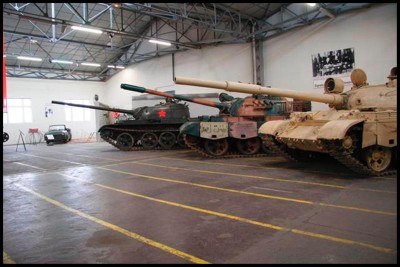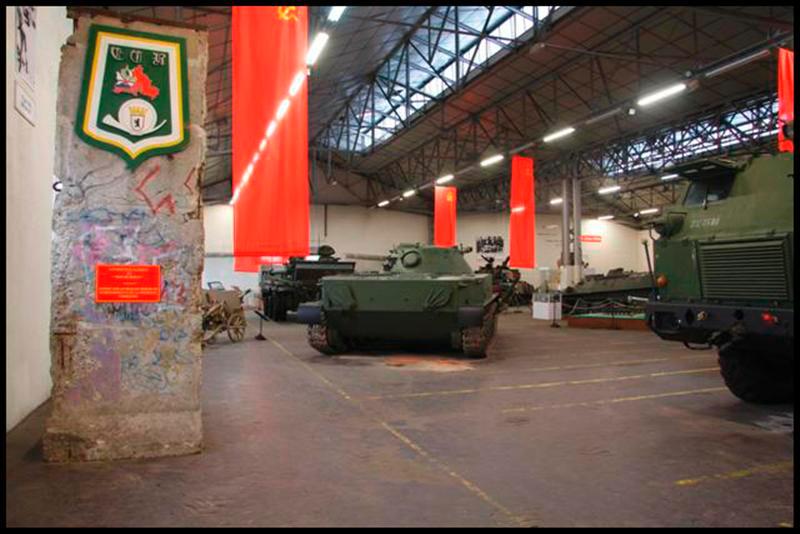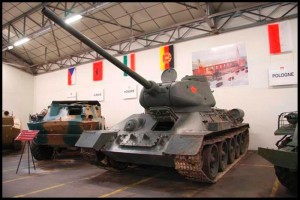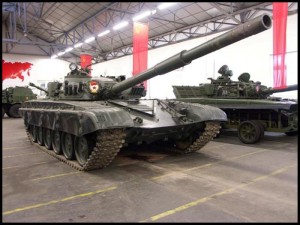Warsaw Pact Room

The Soviets had faith early in the armored vehicles, enlightened perhaps by the tests carried out by the Germans to circumvent the constraints of the Treaty of Versailles. Realistic, they believe in the virtues of rusticity and number.
Having estimated that the average lifespan of a battle tank engine was less than 45 minutes, they refuse to tweak their mechanics like aglo-saxons. It is made rustic, simple, robust and more, standardized, this reasoning is not only about the engines.
The simplicity of the materials facilitates production. From 1941, while the Wehrmacht was approaching Moscow, the arms factories were transferred beyond the Urals. Six months later, they already produce more than the old ones, between 1000 and 1200 tanks per month.
At the beginning of the conflict, the Russians have only tanks derived from foreign models, especially English. Even their most successful armored car, the T34, is largely inspired by Walter Christie's US study, the Walter Christie Medium Tank T 3, which the United States refused.

We are in the thirties: what would the Americans do with an assault tank? Two of the nine specimens produced are acquired by the Soviets, who rapidly industrialize it under the BT (Bystrokhodnij, tank or fast char). Like the Panzer I, it will be tested in Spain.
With the return of peace, the Warsaw Pact is being organized and the "Cold War" is taking hold. In its plans for a possible invasion of Western Europe, the Soviet Union retains a privileged position for armored vehicles and develops models corresponding to the new data of modern combat. It exports to all countries in its zone of influence (especially in the Arab countries) and the various local conflicts prove that these materials have retained the qualities of their predecessors.
machinery
-
T34_85
Armed with an 85 mm gun and weighed down with 4 tons of armor, the T34-85 was at the end of 1943, the last evolution of the original T34-76 which made General Guderian say that it was the best tank in the world. . Weighing 35 tonnes instead of 26,5 while retaining the same 600 HP diesel engine, this version lost a little mobility but its qualities of robustness and rusticity remained ... -
T72
The T72 is the most recent Soviet tank in the collection of the Museum which recovered it in East Germany at the time of the fall of the Berlin Wall. Produced from 1971, widely distributed in the satellites of the USSR and the Arab countries, it fought for the first time in South Lebanon in 1982. This modern machine, equipped with NBC (Nuclear, Bacteriological, Chemical), .. .






